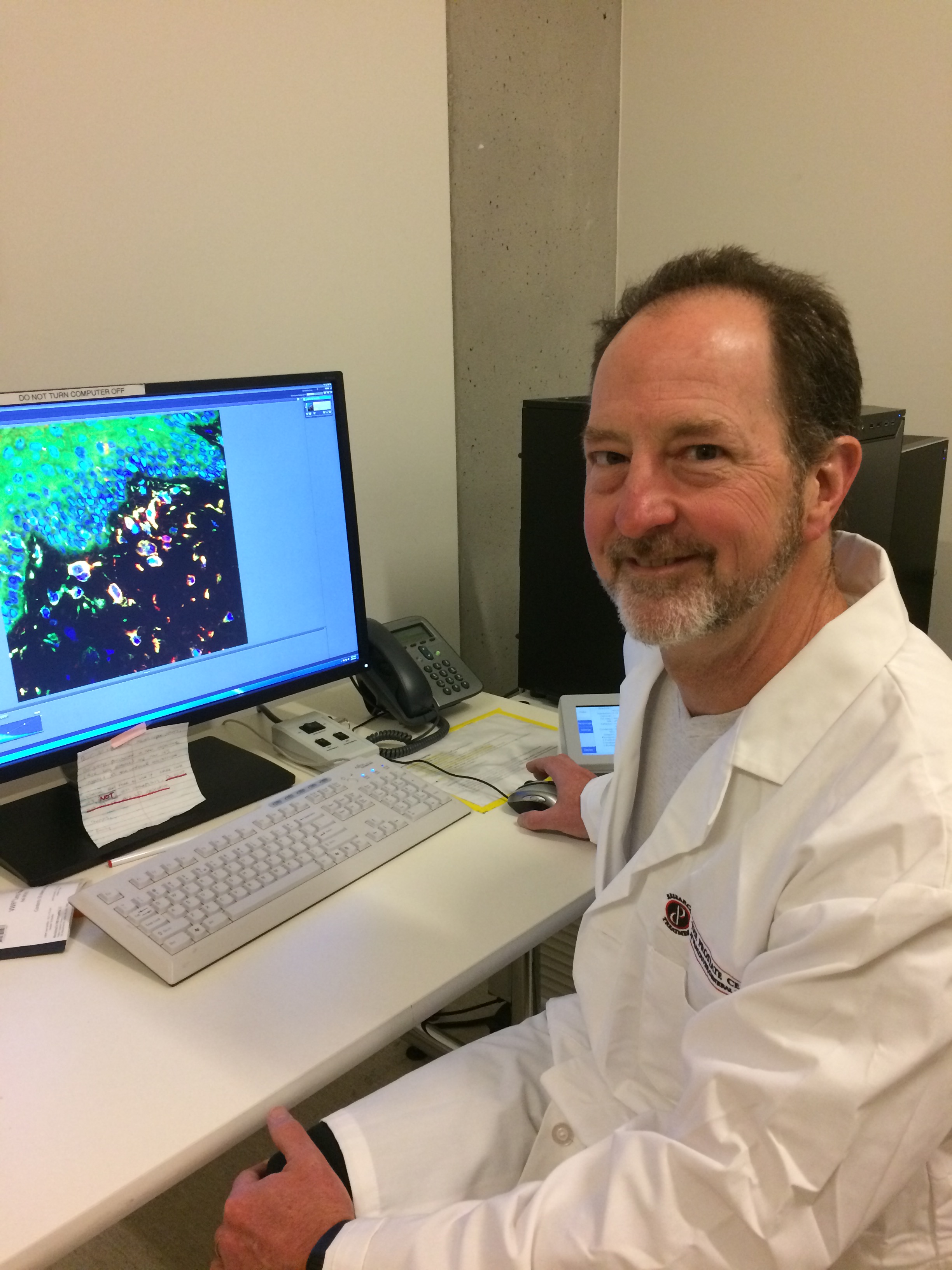
A recent study by a prolific TFRI-funded team has demonstrated that disrupting ERG transcriptional activity is sufficient to suppress the major characteristics of ERG-transformed prostate cancers. The finding could help develop new therapeutic tools for men battling ERG-expressing metastatic castration-resistant prostate cancer.
There are currently few agents targeting cancer metastasis, and the need to create new therapeutics for these patients is great. Led by Drs. Michael Cox, Artem Cherkasov, and Paul Rennie (Vancouver Prostate Centre), the present study (Oncotarget, April 2017) describes the first-in-class small molecule targeting the DNA binding domain of the ETS-family transcription factor, ERG.
Approximately half of all prostate cancers have a recurrent genomic re-arrangement called the TMPRSS2-ERG gene fusion. Numerous studies have associated ERG expression with more aggressive disease characteristics and indicate that ERG drives a genomic reprogramming that promotes cell migration and invasion. The small molecule ERG antagonist, VPC-18005, directly binds to the DNA binding domain of the ERG protein. This inhibits ERG transcriptional activity and suppresses cell motility associated with metastatic spread of the disease.
In addition, the team’s lead compound provided a novel tool for cancer researchers to dissect the specific cellular pathways that are dysregulated by ERG during disease initiation and progression. Understanding these pathways will likely guide development of the next generation of therapeutic strategies for treating advanced prostate cancer.
The present study heavily utilized computer-aided drug discovery pipeline that is applicable to the development of therapeutic agents to antagonize cancer targets previously considered ‘undruggable’. While the group reported that VPC-18005 is stable and orally bio-available, with minimal toxicity in mouse models, there is a need to further refine the compound’s structure.
The team is currently using in-silico predictive algorithms to guide the design and testing of medicinal chemistry derivatives. Such small molecule tools will be critical to developing selective agents for ERG and its related ETS family members and may lead to development of agents to target additional ETS family members known to be oncogenic drivers in other malignancies.
The agents described are the first step in developing therapeutics specifically for those prostate cancer patients whose disease carries the TMPRSS2-ERG re-arrangement. These treatments may function as single agents, but can also be explored in combination with existing and emerging therapies for advanced prostate cancer. Future anti-ERG drugs can be specifically prescribed to the 50 per cent of prostate cancer patients who are ERG-positive, and pave the way for precision medicine.
Prostate cancer is the third leading cause of cancer-related death in Canadian men, and one of the most common cancers for this demographic.
Study: Discovery and characterization of small molecules targeting the DNA-binding ETS domain of ERG in prostate cancer
Authors: Miriam S. Butler, Mani Roshan-Moniri1, Michael Hsing1, Desmond Lau, Ari Kim, Paul Yen, Marta Mroczek, Mannan Nouri1, Scott Lien, Peter Axerio-Cilies, Kush Dalal, Clement Yau, Fariba Ghaidi1, Yubin Guo, Takeshi Yamazaki, Sam Lawn, Martin E. Gleave, Cheryl Y. Gregory-Evans, Lawrence P. McIntosh, Michael E. Cox, Paul S. Rennie, and Artem Cherkasov.
Funding: The project was supported in part by funds provided by Terry Fox New Frontiers Program Project Grant (#TFF116129 to M.E.C).
TFRI LINKS, Summer 2017